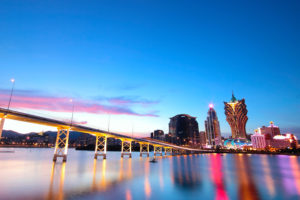Philippines invests in infrastructure to boost cruise-tourism
The Philippines wants to attract more cruise ships to its ports and be part of Asia’s growing cruise-tourism industry.
The Philippines.- Over the years, this Southeast Asian nation has been overcome by its neighbours in attracting cruise visitors. Partly, due to bad infrastructure. However, that’s bound to change as the country aims to build more ports and officials focus on cruise tourism as a key source of arrivals.
Although the country has been facing an economic slowdown, it sees tourism as key focus of efforts to boost growth. It accounted for 12.7% of the Philippines’ gross domestic product last year, beating the government’s goal of 10% by 2022. Furthermore, Government officials are revising up the targets in the country’s tourism development plan.
“Cruise tourism has incredible potential,” said Benito Bengzon, Tourism Under Secretary.
“While our Asian neighbours have the advantage of a regional land connectivity, our archipelago is ideal for cruise tourism.”
Cruise tourism brings large numbers of people to concentrated areas for brief periods, multiplying and focusing the economic impact.“These cruise ports will allow more access to the Philippines and encourage shorter itineraries from north Asian markets like China, Hong Kong, Taiwan, Korea and Japan,” Bengzon said.
Meanwhile, during a recent trade show, government officials and representatives of major cruise lines discussed the possibility of adding the Philippines to Asian itineraries from 2020.
Plans moving ahead
“Cruise calls in Manila, and the Philippines in general, have been growing quite strongly,” said Enrique Razon, chairman of casino-resort operator Bloomberry Resorts Corp. Moreover and “Aside from Manila, we’re looking for one cruise-ship facility in the north and possibly two in the south.”
International Container Terminal Services, Inc., also owned by Razon, is looking to invest € 153 million to upgrade a port in the central Philippine province of Iloilo, which the company says may eventually include a terminal for cruise-ship passengers.
The Philippines’ cruise strategy focuses on Manila, Boracay and Puerto Princesa, as well as potential new destinations in the northern part of Luzon, the country’s main island. In addition, Salomague Port in Ilocos Sur province, scheduled to open this month, will receive Royal Caribbean Cruises Ltd’s biggest ship in Asia in December. Lastly, in April 2021, Manila’s first cruise-dedicated port is scheduled to open at the Solaire Cruise Center.
Tourism has been growing steadily in the Philippines in recent years, reaching 7.2 million visitors last year. The government’s target is about 8.2 million visitors for 2019 and 12 million by the end of 2022, but that still pales next to Thailand, which expects more than 40 million tourists this year. Employment in tourism and related industries has been rising faster than overall job growth. Tourism accounted for 13.4% of Philippine jobs in 2018, projected to rise to 14.4% by 2022, according to the Department of Tourism.







